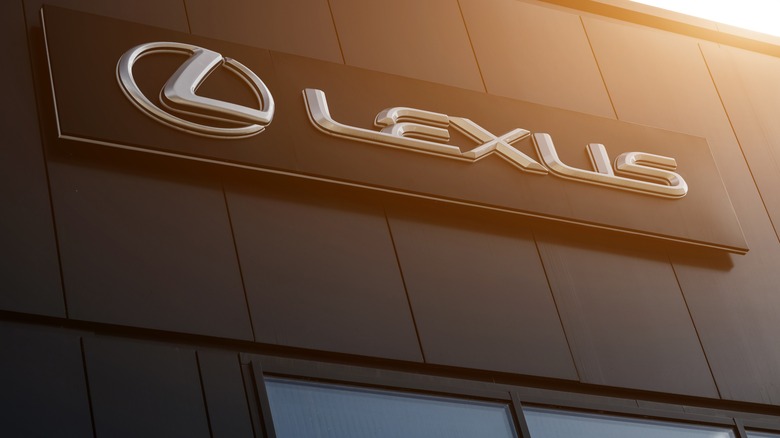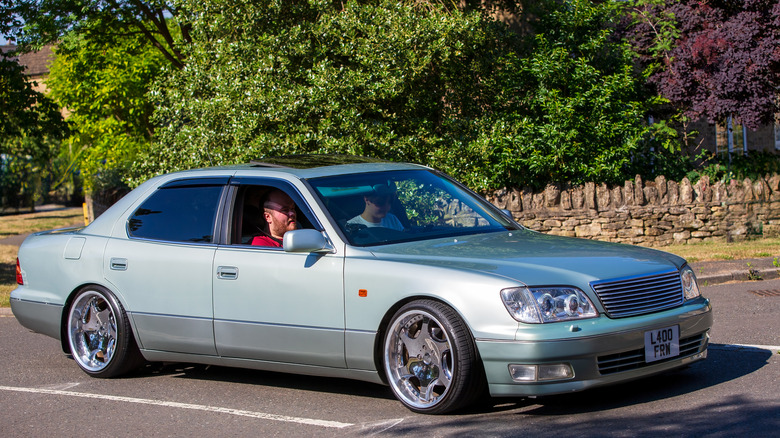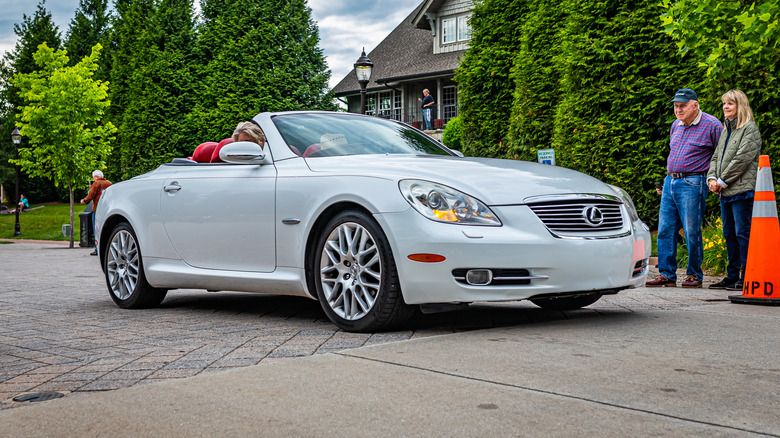How Lexus' Famous Tagline Gave The SC400 Its Inspiration
Auto makers, as some of the biggest and most instantly-recognizable brands on the planet, carefully cultivate their images. Slogans make simple and effective mission statements to this end: Driving Is Passion, Ferrari notes (as demonstrated by a range of its glorious vehicles). A BMW is proudly declared to be "The Ultimate Driving Machine." For Lexus, "The Relentless Pursuit Of Perfection" drives everything.
According to author Chester Dawson's "Lexus: The Relentless Pursuit," the tagline was derived from the company's dedication to just that, in every aspect of its vehicle design. In one early visit to Toyota Motors, it was concluded that "the team had done their homework and come up with what they determined to be the world's best-crafted door lock," the author notes. It's no surprise, then, that the SC400 proved to be a very special vehicle indeed.
Lexus' first venture into the brave new world of the coupe demonstrated that it was committed to bringing a real competitor to market, in a way that drivers may not have expected. After all, on a mission to provide a vehicle that feels "Amazing In Motion," you've got to think outside of the box. Here's the story of the underrated SC400 series.
The development of the SC400
Lexus' debut vehicle, the LS 400, was first unveiled at the Detroit Auto Show in 1989, and quickly established that comfort, luxury, and performance would be the cornerstones of Lexus. With a 250 horsepower V8 engine and an effortlessly elegant, spacious design, it went on to be a big hit — massive, in fact. In 2006, Autoblog reports, Toyota Motor Sales' Jim Press boasted that, in the 17 years prior, the LS had been the top-selling luxury sedan for all but two.
It was, however, still a sedan. The SC400 spawned from an effort to bring the company's burgeoning success to the altogether different world of the coupe.
California's Calty Research and Design started work on the SC400 in 1987, in a move calculated to target the American's' well-known hunger for coupes. The vehicle would run on the same engine as the LS 400, but beyond of that, it was a very different beast. Erwin Lui was asked tasked by Calty to find an unorthodox plan to settle on the vehicle's design. Eventually, he decided on the shape by manipulating plaster-filled balloons. The ultimate result, Liu said, according to Popular Science in 1991, was "a shape I ended up calling the fender theme. If you look at the side of the car, you can see it outlined by a fender line that gets pulled around the entire body."
Another Lexus success
Targeting the United States with the SC400 was the right move to make. After all, this was the nation that made the 1964 Ford Mustang a 680,000 seller that year alone. Lexus' SC300 and SC400 were also warmly embraced by coupe enthusiasts, though they didn't seem to make the impact that they might have deserved to: In the year 2000, the SC's sales were lowest, with 905 sold.
After around a decade, Lexus decided to set its sights on a new direction for its coupe division. The SC430, a unique convertible, was the result of these efforts. Revealed in 2001, the 2006 model put out 282 HP at 5600 rpm. Rather more stylized than its predecessor, it was a sight to behold — a coupe-to-convertible transformation rather like the Maserati MC20 Cielo.
Though the SC400 is no longer in production, it continues to retain a bit of popularity. In 2020, Hagerty noted that around $8,000 will net drivers an SC, an underrated and hardy vehicle that still boasts solid performance. Today, it may not quite represent the perfection it was once intended to. On the other hand, a smooth, comfortable, spacious ride for a less-than-premium price may well be just that. Its launch price, adjusted for inflation today, would have been a little over $85,000.


